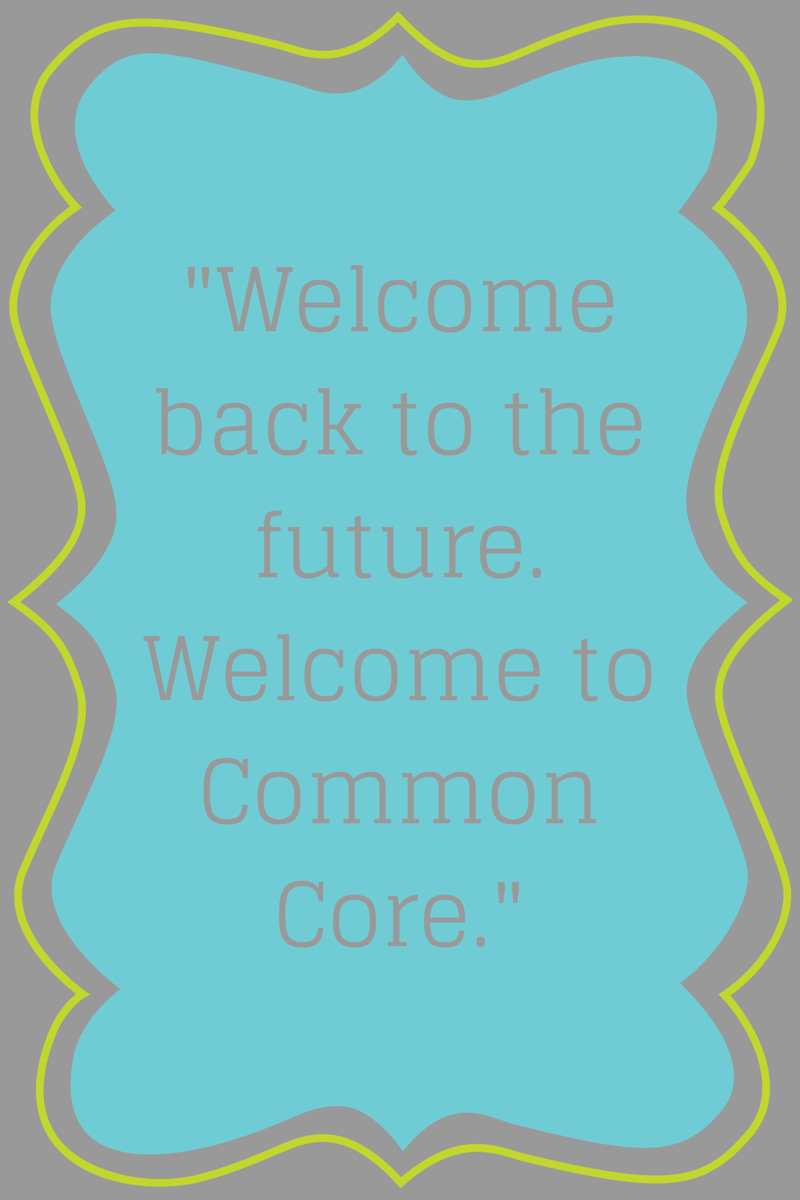By: Margo Ensz on October 7th, 2014
Welcome Back to the Future: Meeting the Needs of Common Core
VariQuest's blog is open to educators across the country who are interested in sharing their ideas, stories and opinions with our network of teachers, administrators and more. If you have something you would like to share, please let us know! Email your ideas to variquest@variquest.com
Charlie Brown’s teacher in the Peanuts comic strip is always represented with the phrase “Wah, Wah, Wah, Wah, Wah.” Even when Charlie answers, her retort is still the same. For many years we had a “sit-and-get” environment, teacher speak/student listen, drill and kill, skills-based learning for the knowledge and comprehension of the learning.
Meeting the goal of 60% student engagement in the classroom for Common Core seems daunting, and many teachers are fearful of the Common Core approach. I am a teacher of the 70’s and 80’s. We taught the learning by embedding the skills and comprehension into the instruction through:
- Concept development
- Problem-based learning activities and simulations
- Inquiry method using Junior Great Books
- Requiring students to explain and demonstrate understanding of the critical details of what was learned
- Puzzles that made students analyze the features of the project to formulate the correct responses
- Show don’t tell method
- Taxonomy levels of learning
We would the teach depth and breadth of the learning, not just push the kids along using assessments of multiple guess questions for advancement. So how do we break the skills-based instructional pattern we used during the 90’s and early 2000’s? This is necessary so we can move past the regurgitation stage and get to the “so what?” results.
Many of the vehicles I remember using in those days as a teacher, and later as a principal coaching my faculty, included incorporating the following into my classroom:
- Visual prompts for writing
- Completing graphic organizers and charts for brainstorming
- Taking notes of the details generated or observed in passages
- Assigning thinking games of concentration and memorization
- Using Oregon Trail or market simulations that had real life learning with skills imbedded in them for success
As a teacher, the learning was harder and more complex, so the visual cues and reminders allowed assisted all learners in organizing and archiving their thoughts for reflection during more critical applications of the basic knowledge and comprehension. Why did it go away? It was difficult to assess and not “Scantronable.” It didn’t serve the skills-based era.
Now?
Welcome back to the future. Welcome to Common Core. We shouldn’t fear this “new style of presentation.” We have been there before. Those of us that were in school or had taught in classrooms prior to 1997 have first-hand experience using these strategies and techniques for enhanced learning “beyond, but including the basic.”
I am excited to say that my experiences using the VariQuest tools and working to train teachers to use visual learning strategies mentioned above. There are many examples of ways schools can focus their instruction on having students demonstrate the understanding of the learning so they can support their findings in the details each and every day they go to school. It is now my passion to create and share the ideas and strategies I used then that are extremely applicable now and finger-tip ready using the suite of tools that can support the traditional “lecturing” teacher in the classrooms of today. I invite you to take a look.
Welcome back!

Steve Ahle has over 30 years of administrative experience and has become a prominent figure in California education. He was the principal of two schools named California Distinguished Schools, and was named San Diego Elementary Principal of the year in 2002 and National Distinguished Principal in 2006. He currently teaches at two higher education institutions in California, and is a representative for NAESP.


